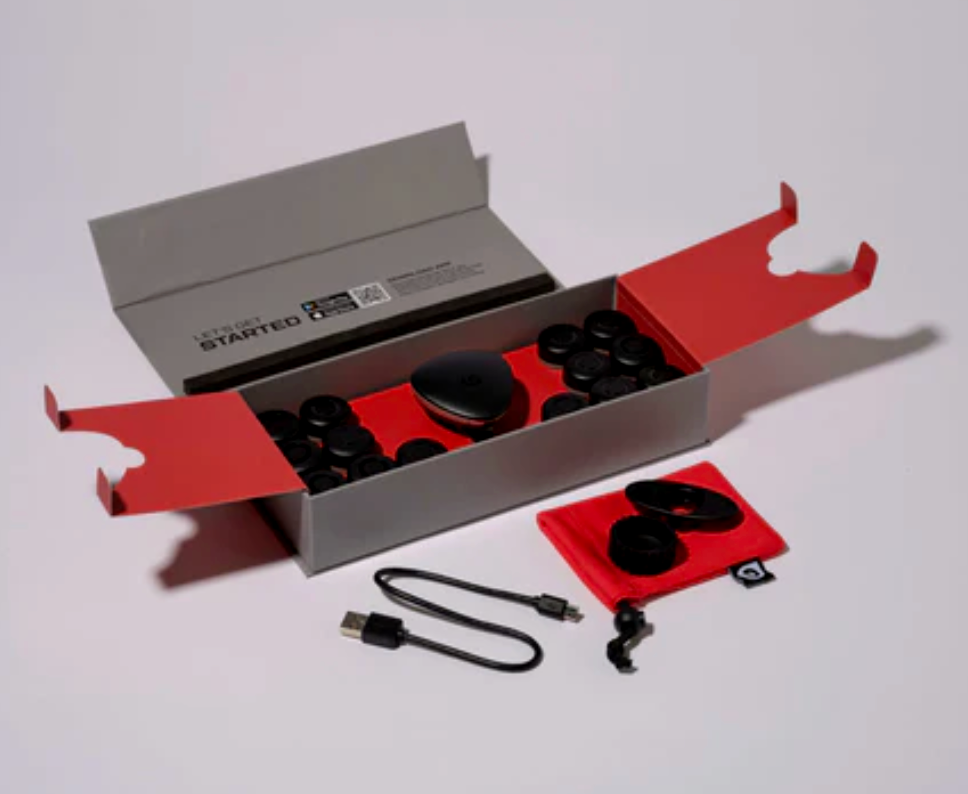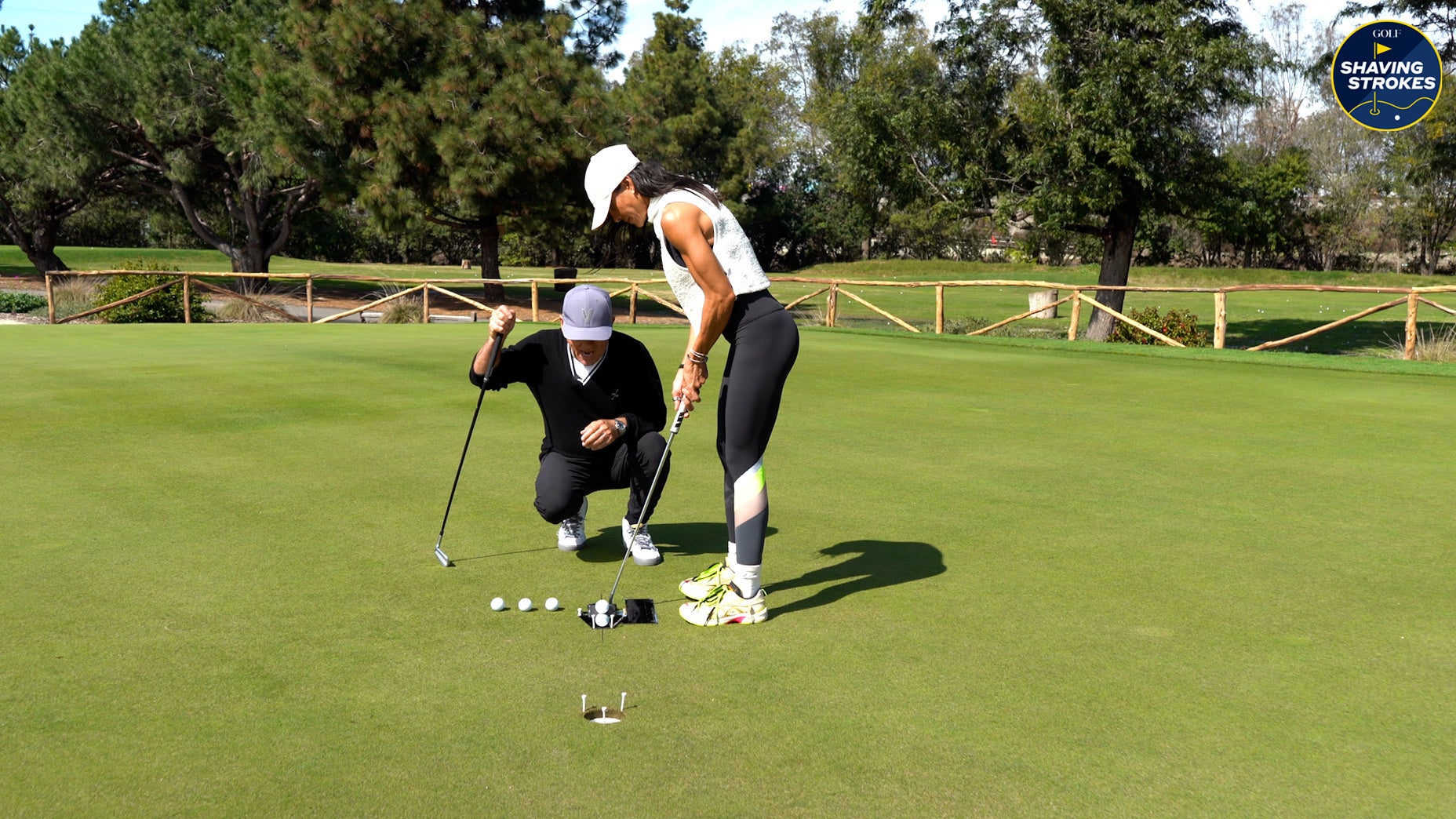How to prepare for (then dominate) a links golf course, per Top 100 Teachers

Links golf courses present different challenges. So here's how to find success despite their unique nuances.
Getty Images
Welcome to Play Smart, a regular GOLF.com game-improvement column that will help you play smarter, better golf.
This week’s Open Championship is being played at one of the most well-known links golf courses in the world, Royal Liverpool.
Not only is the layout as difficult as any links course, but add in the typical unpredictable weather that often accompanies this tournament, and there’s no telling how players will manage their emotions after each shot.
From funky pot bunkers to tight OB lines along certain holes, Royal Liverpool has the possibility of chewing up and spitting out this year’s tournament field. So it’ll be interesting to see how things play out once the Open Championship starts tomorrow.
Since all links golf course designs are unique in their own right, with each presenting numerous challenges, I asked a few GOLF Top 100 Teachers how an amateur golfer can best prepare for a round on one.
From understanding how to change your approach to course management tactics that will help guide your decision-making, take a look below at what some of the brightest teaching minds in golf had to say.
How should a golfer change their approach when playing a links course?
Mike Bender, Master Instructor, Mike Bender Golf Academy: “Links golf courses have two major challenges; wind and firmness. Since links courses rarely use irrigation, the fairways are sometimes as fast or faster than the greens. This makes the courses play much narrower than a normal course, where balls stop quickly after landing.
“The wind adds another element of challenge, so players must gauge how much it will move or impact their ball. Knowing this forces a player to approach each shot differently, making sure the ball flight is down low.”
Ed Ibarguen, GM and PGA Director of Golf at the Duke University Golf Club: “You absolutely must prepare before you go. Temperatures may vary from mildly warm to mostly chilly. It’s likely to rain at some point while you are playing golf; anything from mist to heavier rain. If you don’t own a high-quality rainsuit, buy one and bring it, as it’ll become your best friend!
“As most of your golfing accessories will get wet, prepare to dry your wet clothes, gloves, headwear and grips overnight to have them ready for play the next day.”
Ibarguen also suggests loading up on golf balls in order to have peace of mind should the course get the best of you.
“Depending on your skill level, plan to take the normal number of balls you would take on a golf trip and then, one dozen extra. While most shops will carry your golf ball, their price will likely be quite higher than you are used to paying. Also, please give your caddy a break by not putting more balls in your bag than you will expect to play during that round. Keep your extra balls in your travel bag in case you need more when you are playing 36 holes in a day.”
Jamie Mulligan, CEO, Virginia Country Club: “Learn the ‘chip and chase.’ If a full swing goes around the clock, this swing goes from 10 a.m.-2 p.m. with quieter movements and less pace.
“A great way to practice is to learn to hit drivers off a tee without moving the tee. The idea is to make solid contact and let the ball chase out. This is especially effective if turf conditions are hard, firm, and fast.”
Is there a standard recommendation on clubbing up or clubbing down?
Bender: “Which clubs to hit off the tee on links courses is totally situational. One day a hole is downwind and requires an iron or hybrid off the tee to keep it in play, and the next day it could be the complete opposite, requiring a low driver into the wind.
“My best advice is to be flexible with your tee shot management. If possible, practice teeing the ball lower with driver and hitting more of a boring flighted driver — as you will need it on some holes.”
What are some course management tips for amateurs to use on a links golf course?
Bender: “Links golf courses put a much bigger demand on course management. This is because of the short greens, where players must be precise with where they land their shots.
“A player must know which way the fairway is sloped, or where the mounds are short of the green, in order to know what the ball will do once it lands and starts rolling. It is much like reading a sloped green, but, in this case, you must read the fairway in order to know where to land the ball.”
Ibarguen: “If you’re used to playing in windy conditions, there won’t be too much for you to do differently. If you aren’t used to playing in wind, take the time to practice half to three-quarter length shots.
Place the ball about 1.5 inches further back than your normal stance (the further back ball position will set your hands and shaft more forward, deloft your club at address, and allow you to feel more comfortable with your weight favoring the left side – assuming you’re a center to trail hip post player).
“You will notice that less swing speed and this ‘trapped’ ball position will combine to lower your trajectory. That lower trajectory will be extremely helpful in controlling your ball against the wind.
“Finally, if you have access to a GC Quad or Trackman, find out the different yardages that this setup and swing will produce and use that information to your advantage during your rounds. If this recommendation is still flighting your ball too high, then practice choking down one inch with the same setup to produce a lower flight and less overall carry distance.”
Mulligan: “Playing with the wind is essential — so remember that the wind is your friend. If it’s blowing into you, hit under it. If the wind is going left to right or right to left, go with it. If you’re with the wind, just let it take your ball farther. Knowing wind direction is critical, and maybe one of the best things that Tour players do that isn’t noticed by most amateurs.”
Do you suggest amateurs putt more off the green rather than use a wedge to avoid mishits or weather impacts?
Bender: “I would always recommend using your putter off the green anytime you can. The biggest challenge with putting off the green isn’t the speed, but judging the slopes. That’s because you normally will have to come up and over them to get close to the hole. Better hone in your feels for some miniature golf type putts, because you will definitely have some.”
Ibarguen: “When putting from off the green, take about two 20-30 minute sessions to practice putting before your round. Although the grasses and conditions will be different compared to your home track, this practice will pay off in saved approach shots in Europe.
Another option is using your hybrid from just off the green, which Ibarguen says requires a few practice strokes as well.
“Simply choke down several inches to bring it closer to your putter length and feel. Use your regular putting grip, and play the ball in the middle of your stance. You’ll be shocked at how easy it is to adapt to this shot, and it will be one to come in handy during your trip abroad.”
Mulligan: “Around the green, get the ball on the ground quicker than you normally would. I love the idea of the bump and run, as it’s used more on conventional courses that we play in America. A lot of times we call this a putting stroke with loft on it.”
What swing adjustments should a player make on a links golf course?
Bender: “It’s extremely difficult to change your swing while playing certain types of courses, but what you need to do is change your setup to allow for the shot at hand.
“Links golf requires you to mostly flight the ball lower, so play the ball back in your stance with your weight more on your front foot. When you play the ball back, you need to open your stance to account for the ball being farther back. This open stance will help the ball start on line and not too far to the right (for right-handed golfers).
“My other suggestion is to limit your follow through, as a full finish tends to make the ball fly higher.”
Ibarguen: To finish up the thought on putting, Ibarguen says it’s important to get a wider base when putting on a links golf course. This is due to windier than normal weather conditions.
“While you’re in your putting practice session, spend a little time on the green putting from a wider than normal stance in case you get into a higher wind condition. The wider base length in your feet will help you stabilize your stroke and help you from being ‘blown’ off balance during your stroke by the wind.”
Mulligan: “When you’re putting, the quieter your body is, the more you’re going to make solid contact.
“Normally, the greens aren’t as fast as you’re used to. But if you’re going downhill and down grain, you have to pay more attention to the land. Quiet means from head to toe: many times the quieter the eyes, the more your stroke will work in rhythm with solid contact.”
Is flying a driver or is hitting a low stinger shot the best way to see success off the tee?
Ibarguen: While most players always default to using a driver on their home course, when playing a links golf course, it’s not always the best option — especially for windy conditions or when there are tight lies along the fairways.
This is why Ibarguen recommends practicing lower trajectory shots; whether that’s with your driver or by hitting a low-ironed stinger shot (something that Tiger Woods used to success in his previous Open Championship victories).
“As everyone will tell you, wind is a primary factor in scoring well on links courses. Therefore, spend time trying to lower your overall driver trajectory.
“The word ‘stinger’ has become popular in golf vernacular today, but if you don’t own a stinger shot, it’s simply a lower-flighted, penetrating golf shot with less spin (spin adds trajectory). Due to the lower, penetrating ball flight, it will produce more controlled ground distance.
“The stinger can be played both right to left and left to right, as it will be a combination of clubhead path, steepness of angle of approach and club face position at impact. Unless you are a highly skilled ball striker, it a good plan to see which ball flight your normal swing will produce naturally.”















